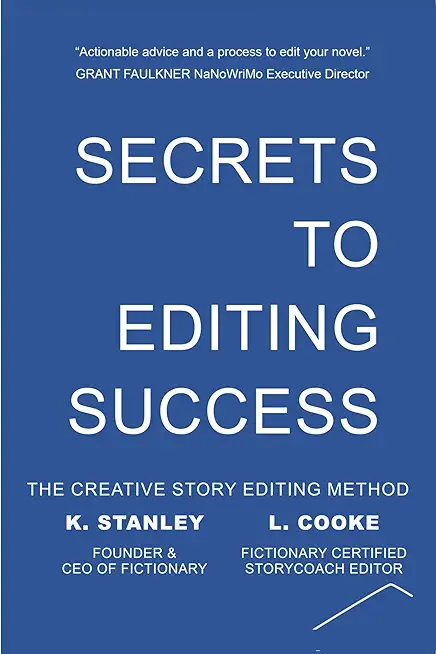
description
7Standard American English Its Structure and Usage is an instructional handbook which explains standard grammar and punctuation rules as well as the terms and reasons for using them. The structure is presented in two formats: traditional grammar terms and generative, or transformational, grammar terms. You will become self-assured with standard usage by practicing your editing skills on sentences and paragraphs.
Grammatical structure refers to the intrinsic patterns of English, which are surprisingly similar to the patterns of most other languages, and should not be confused with standard usage. According to Noam Chomsky, America's foremost linguist, ungrammatical sentences are very rarely produced by humans; not even small children produce them. An ungrammatical sentence would violate the rules of grammar, which are hard-wired into our brains. Stroke or accident victims who have sustained brain damage do sometimes produce an ungrammatical sentence, but this is because their hard-wired programs have been injured or disturbed. An example of an ungrammatical sentence is 'Bob table on bringing'. This string of words does not fit any grammatical structures in English, whether they are described in traditional or generative grammar terms.
Rules of standard usage, on the other hand, are violated every day by countless speakers of every educational, social, regional, and ethnic background. These rules have been established by academia and include the use of 'who' or 'whom', 'see' or 'seen', 'good' or 'well', 'brang' or 'brought', and the like. People who violate the rules of standard usage may do so out of ignorance or as a matter of choice. Following the rules of Standard English is not necessary one hundred per cent of the time. For example, you may want to blend into a certain social situation in which nonstandard usage is the norm. Making language choices is much like deciding what to wear. Generally you try to choose what is appropriate for the occasion. Using Standard English in some circumstances may make you feel just as awkward as wearing a suit to the beach. However, you need to have that suit in your closet when formal situations, such as academic work or a job interview, do arise. Like it or not, you are judged by your use of language.
One of the main purposes of this book is to provide you with that suit. Once you are comfortable knowing that you can follow all the rules of Standard English when the occasion calls for them, you will be able to make the appropriate choices without worry. Unfortunately, there are no tricks, no easy formulas, no shortcuts on the path to learning Standard English. The only way to be certain of the rules is to first understand the structure of English, those intrinsic patterns that you were born with the ability to comprehend. In fact, none of the material presented here is beyond the cognition of a ten-year-old, but several years of instruction have been compressed into a single volume. If you had learned grammar in tandem with reading all through the grades, you might not need this book, but chances are that this has not happened.
By learning standard English, you will become better at both reading and writing. Knowing the meaning of every word in a string does not guarantee knowing the meaning of the sentence. Meaning comes from the way in which the words are connected, and that is grammatical structure. Becoming aware of different structures and how they can be changed or moved to add subtle meaning in your own writing will definitely enhance the effect of your communication skills.
Grammatical structure refers to the intrinsic patterns of English, which are surprisingly similar to the patterns of most other languages, and should not be confused with standard usage. According to Noam Chomsky, America's foremost linguist, ungrammatical sentences are very rarely produced by humans; not even small children produce them. An ungrammatical sentence would violate the rules of grammar, which are hard-wired into our brains. Stroke or accident victims who have sustained brain damage do sometimes produce an ungrammatical sentence, but this is because their hard-wired programs have been injured or disturbed. An example of an ungrammatical sentence is 'Bob table on bringing'. This string of words does not fit any grammatical structures in English, whether they are described in traditional or generative grammar terms.
Rules of standard usage, on the other hand, are violated every day by countless speakers of every educational, social, regional, and ethnic background. These rules have been established by academia and include the use of 'who' or 'whom', 'see' or 'seen', 'good' or 'well', 'brang' or 'brought', and the like. People who violate the rules of standard usage may do so out of ignorance or as a matter of choice. Following the rules of Standard English is not necessary one hundred per cent of the time. For example, you may want to blend into a certain social situation in which nonstandard usage is the norm. Making language choices is much like deciding what to wear. Generally you try to choose what is appropriate for the occasion. Using Standard English in some circumstances may make you feel just as awkward as wearing a suit to the beach. However, you need to have that suit in your closet when formal situations, such as academic work or a job interview, do arise. Like it or not, you are judged by your use of language.
One of the main purposes of this book is to provide you with that suit. Once you are comfortable knowing that you can follow all the rules of Standard English when the occasion calls for them, you will be able to make the appropriate choices without worry. Unfortunately, there are no tricks, no easy formulas, no shortcuts on the path to learning Standard English. The only way to be certain of the rules is to first understand the structure of English, those intrinsic patterns that you were born with the ability to comprehend. In fact, none of the material presented here is beyond the cognition of a ten-year-old, but several years of instruction have been compressed into a single volume. If you had learned grammar in tandem with reading all through the grades, you might not need this book, but chances are that this has not happened.
By learning standard English, you will become better at both reading and writing. Knowing the meaning of every word in a string does not guarantee knowing the meaning of the sentence. Meaning comes from the way in which the words are connected, and that is grammatical structure. Becoming aware of different structures and how they can be changed or moved to add subtle meaning in your own writing will definitely enhance the effect of your communication skills.
member goods
No member items were found under this heading.
Return Policy
All sales are final
Shipping
No special shipping considerations available.
Shipping fees determined at checkout.







